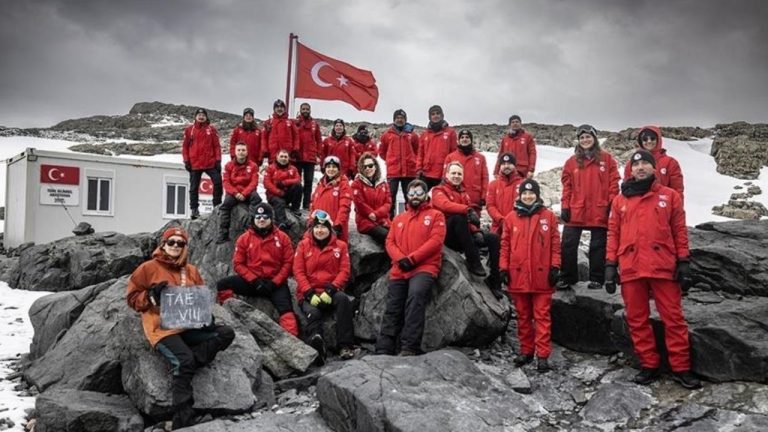Turkish Scientists ın a monumental stride towards understanding the complex ecosystems of the Antarctic, Turkish scientists have embarked on an unprecedented research project focusing on the breeding patterns of the region’s diverse wildlife. This extensive study not only underscores Turkey’s expanding role in global scientific research but also aims to provide critical insights into the survival strategies of species in one of the planet’s most extreme environments.
The Importance of Studying Antarctic Breeding Patterns
Turkish Scientists Antarctica, with its harsh climate and remote location, presents a unique challenge for wildlife. Species that inhabit this icy continent, such as penguins, seals, and various marine birds, have developed extraordinary adaptations to survive and reproduce in these conditions. Understanding their breeding patterns is crucial for several reasons:
Ecological Insight: By studying the reproductive behaviors of these species, scientists can gain a deeper understanding of the Antarctic ecosystem’s dynamics. This includes how these animals interact with their environment and the ecological roles they play.
Conservation Efforts: Many species in Antarctica are threatened by climate change and human activities. Detailed knowledge of their breeding habits can inform conservation strategies to protect these animals and their habitats.
Global Climate Impact: The breeding success of Antarctic species is closely linked to environmental conditions. By monitoring changes in breeding patterns, scientists can gather data on the broader impacts of climate change.
Methodology: Cutting-Edge Techniques and Challenges
The Turkish research team employs a variety of advanced techniques to gather data on the breeding patterns of Antarctic species. This includes satellite tracking, drone surveillance, and the use of remote sensing technologies to monitor animal populations and behaviors from a distance, minimizing human disturbance.
Satellite Tracking: This method allows researchers to follow the movements and behaviors of animals over vast distances and through severe weather conditions. For example, satellite tags on penguins can provide data on their foraging trips and nesting locations.
Drone Surveillance: Drones offer a non-intrusive way to observe animals in their natural habitats. High-resolution cameras on drones can capture detailed images and videos of breeding sites, which are crucial for studying nesting behaviors and chick development.
Remote Sensing: Remote sensing technologies help in collecting data on environmental conditions, such as temperature, ice cover, and vegetation. This information is essential for understanding how these factors influence breeding success.
Despite the technological advancements, the researchers face significant challenges. The extreme cold, unpredictable weather, and logistical difficulties of conducting research in such a remote location require meticulous planning and robust equipment. The team must also be prepared to adapt their methods as conditions change.
Turkish Scientists Key Findings and Implications
The initial findings of this research have already provided valuable insights into the breeding habits of several Antarctic species:
Penguins: The study has revealed intricate details about the breeding cycles of various penguin species. For example, Emperor penguins, which breed during the Antarctic winter, rely on sea ice stability for their nesting sites. Any changes in ice patterns due to climate change can severely impact their reproductive success.
Seals: The research has highlighted how Weddell seals adapt their breeding behaviors to the seasonal availability of prey and the presence of predators. Understanding these dynamics is crucial for predicting how seal populations might respond to environmental changes.
Marine Birds: For birds like the Antarctic petrel, the timing and location of breeding are closely linked to ocean currents and food availability. Changes in sea temperature and ice cover can thus have a significant impact on their breeding success.
These findings have several important implications:
Conservation Strategies: The data collected can be used to develop targeted conservation efforts. For example, identifying critical breeding sites that need protection from human activities or climate-related threats.
Policy Development: The research can inform international policies aimed at mitigating the impacts of climate change on Antarctic ecosystems. By providing concrete evidence of how environmental changes affect wildlife, policymakers can better advocate for measures to reduce greenhouse gas emissions and protect vulnerable habitats.
Public Awareness: Raising awareness about the unique challenges faced by Antarctic wildlife can help garner support for conservation initiatives. Public engagement and education are vital for the success of these efforts.
Turkish Scientists International Collaboration and Future Research
The Turkish research initiative is part of a broader collaborative effort with international scientific communities. Such collaborations are essential for sharing knowledge, resources, and expertise. Working together, scientists from different countries can create a more comprehensive understanding of the Antarctic ecosystem.
The future of this research holds great promise. Ongoing studies will continue to monitor changes in breeding patterns, providing long-term data that is crucial for assessing the impact of climate change. Additionally, the research team plans to expand their focus to include more species and explore other aspects of Antarctic ecology, such as predator-prey relationships and the impact of human activities like fishing and tourism.
Turkish Scientists Unveil Antarctic Breeding Patterns
The pioneering research conducted by Turkish scientists in Antarctica represents a significant step forward in our understanding of this remote and fragile ecosystem. By uncovering the breeding patterns of its wildlife, they are not only contributing to global scientific knowledge but also playing a crucial role in conservation efforts. As the effects of climate change become increasingly apparent, such research is more important than ever in our collective efforts to protect and preserve the natural world.

